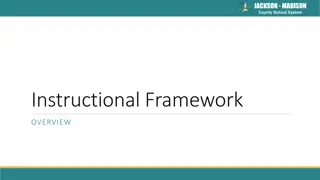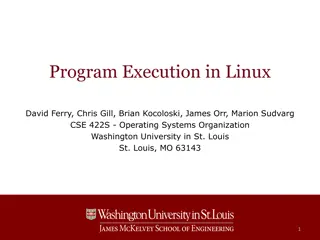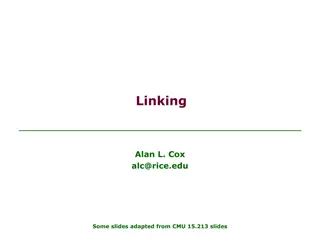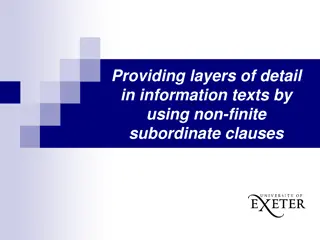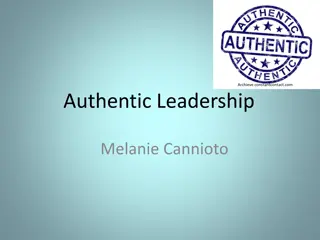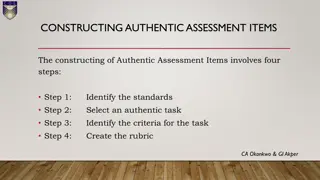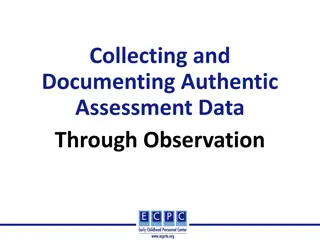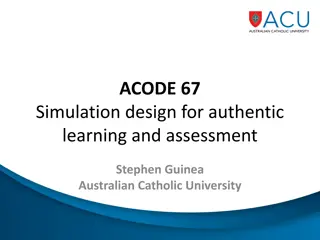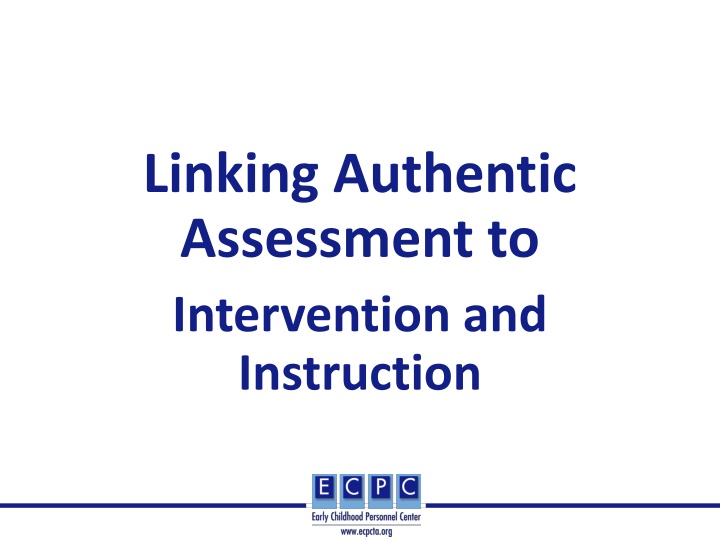
Data-Based Decision-Making in Educational Assessment and Instruction
Explore the process of data-based decision-making in educational assessment and instruction, including steps, strategies, and involving families. Learn how gathering, documenting, and analyzing data informs interventions, evaluations, and communication among team members.
Uploaded on | 0 Views
Download Presentation

Please find below an Image/Link to download the presentation.
The content on the website is provided AS IS for your information and personal use only. It may not be sold, licensed, or shared on other websites without obtaining consent from the author. If you encounter any issues during the download, it is possible that the publisher has removed the file from their server.
You are allowed to download the files provided on this website for personal or commercial use, subject to the condition that they are used lawfully. All files are the property of their respective owners.
The content on the website is provided AS IS for your information and personal use only. It may not be sold, licensed, or shared on other websites without obtaining consent from the author.
E N D
Presentation Transcript
Linking Authentic Assessment to Intervention and Instruction
EI/ECSE Standard 4, Component 4.4 Candidates, in collaboration with families and other team members, use assessment data to determine eligibility, develop child and family- based outcomes/goals, plan for interventions and instruction, and monitor progress to determine the efficacy of programming.
DEC Recommended Practices (2014) A9 Practitioners implement systematic ongoing assessment to identify learning targets, plan activities, and monitor the child s progress to revise instruction as needed. A11 Practitioners report assessment results so that they are understandable and useful to families.
Objectives Identify and Describe The steps in the data-based decision- making process. Summarizing and interpreting data to inform intervention and instruction. Practice Strategies for involving the family in the data-based decision-making process. Describe
Data-Based Decision-Making Definition Using assessment data to guide instruction and intervention.
Data-Based Decision-Making Process Gathering Information Implementing Documenting Planning Analyzing
Gathering, Documenting, and Analyzing Data Allows One To: Determine the effects of instruction and intervention on target outcomes/goals, Determine how and when to continue, adapt, or discontinue instruction and intervention, Provide formative and summative evaluation data, and Engage in communication between team members.
Planning: Questions to Consider 1. What outcomes/behaviors are targeted and what type of data is needed? 2. What practices or strategies will be implemented? 3. How often, when, where, and who should collect the data? 4. How should the data be interpreted and used? What are the decision rules? 5. How will the data be shared with team members?
Determine Decision Rules What is criteria for mastery of the outcome/goal? Length of time behavior exhibited, Percentage of target responses, or Number of target responses. What is acceptable progress toward outcome/goal? How will progress toward mastery be monitored?
Implementing Instruction and Intervention Implement the identified evidence-based practice or strategy, Implement the practice/strategy with fidelity, Collect assessment data to monitor the child s progress, Review the data and determine next steps for intervention and instruction.
Making Decisions About Next Steps 1. If a child is not making progress: Continue implementation, or Revise the implementation plan. 2. Child is making progress, but has not met criteria: Continue implementation, or Adjust implementation for efficiency. 3. Child has accomplished the outcome/goal: Target a new outcome/goal, or Target the same outcome/goal to a new criteria.
Using Data to Inform Teaching (2:42) Watch the video and respond to the following questions: What should you do if the child is making progress and has not yet achieved the outcome/goal? What can you do if a child is not making progress on an outcome/goal? How might you use this information with a child with whom you are currently providing services?
If The Child Is Not Making Progress: Review the assessment data to determine if changes to any of the following are needed: The target outcome/goal, The activity/routine in which implementation occurs, Antecedents or consequences, Accommodations or modifications to equipment or materials, and/or The evidence-based practice or strategy,
Learning Activity: Interpreting Data Read the activity overview at this link and follow the directions for graphing the data for Josiah and Annick and determining next steps for instruction. Source: Head Start Early Childhood Learning and Knowledge Center. (n.d.). Children with Disabilities. Head Start Early Childhood Learning and Knowledge Center.
Children with Disabilities (5:52) Watch the video and respond to the following questions: How did these teachers implement the data-based decision-making process? What is the rationale for teachers and other professionals collaborating in this process? How are you or have you used data to inform intervention and instruction?
Collaboration With the family and Other Professionals Regular team meetings to plan, review data, and make decisions about changes in intervention and instruction, Ongoing communication with team members, including the family, and Celebration of successes!
Sharing Video Documentation with Families (2:47) Watch the video and respond to the following questions: What are some of the benefits of using video with families to discuss children s progress? How can video be used to involve the family in decision-making about their child s program? What are some of the opportunities that you might have to use video with families?
Using Video to Celebrate Progress (2:09) How was video used differently with the family in this video than in the previous one? How could you actively involve the mother in discussing the weekly videos specific to the child s progress and planning for implementation of target outcomes/goals? How might you use the video clips? What might you say to the mother? In what other ways, could these video clips be used with other family members or professionals?
References and Resources Colorado Department of Education. (n.d.). Results matter video library. Colorado Department of Education. https://www.cde.state.co.us/resultsmatter/rmvideoseries
References and Resources (contd.) Head Start Early Childhood Learning and Knowledge Center. (n.d.). Children with disabilities. Head Start Early Childhood Learning and Knowledge Center. https://eclkc.ohs.acf.hhs.gov/video/children-disabilities Head Start Early Childhood Learning and Knowledge Center. (n.d.). Using data to inform teaching. Head Start Early Childhood Learning and Knowledge Center. https://eclkc.ohs.acf.hhs.gov/video/using-data-inform-teaching
Disclaimer This is a product of the Early Childhood Personnel Center (ECPC) awarded to the University of Connecticut Center for Excellence in Developmental Disabilities and was made possible by Cooperative Agreement #H325B170008 which is funded by the U.S. Department of Education, Office of Special Education Programs. However, those contents do not necessarily represent the policy of the Department of Education, and you should not assume endorsement by the Federal Government.

![Read⚡ebook✔[PDF] Linking the Space Shuttle and Space Stations: Early Docking Te](/thumb/21519/read-ebook-pdf-linking-the-space-shuttle-and-space-stations-early-docking-te.jpg)





